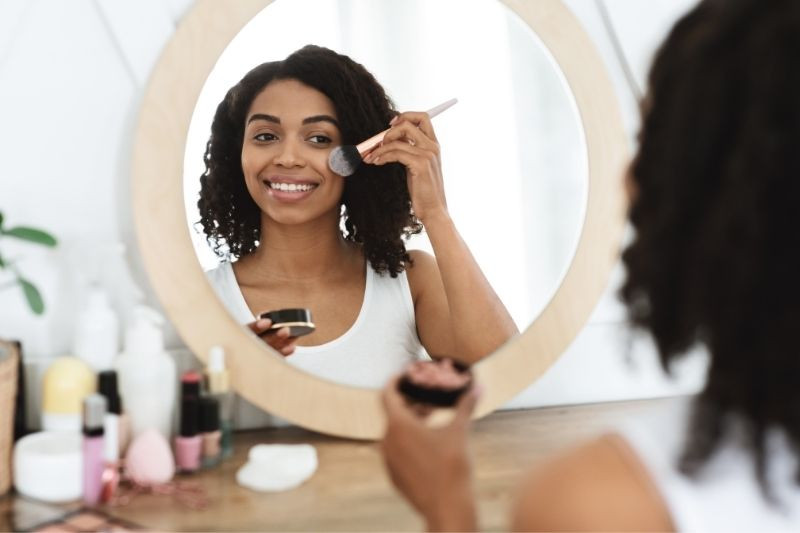Whether you love it or hate it, blush gives you an undeniable glow and a facial lift when you use it properly. Although you might follow the most popular blush advice—smile and brush it onto the apples of your cheeks—blush should be a personalized experience. When you understand the common mistakes that people make when applying blush, you can avoid making them for yourself.
Wearing the Wrong Shade
With many fun colors and shades to choose from, it can be challenging to pick the best shade to complement your skin tone. A good rule of thumb is to choose a color that matches your checks when you have a natural flush. For example, you should opt for a pale pink if you have very fair skin, apricot for an olive complexion, and more pigmented tones for darker skin tones.
Not Considering Face Shape
Everyone’s face is different; as a result, the way each individual applies blush should differ. For instance, if you have a rounder face and your friend has a sharp jawline, you shouldn’t mimic how she uses blush.
Round faces require an upward blush angle, moving from the upper cheeks to the temple. On the other hand, if you have a sharper jawline, start from the bottom of your face and diffuse the blush upward.
Applying Too Much Product
Many people skip blush to avoid sporting a clownish appearance, and applying too much product is the ultimate way to create an overdone look. Instead, start with a small amount of blush and add more if you decide you need more color. Remember, it’s much easier to add blush than take it away when you apply too much.
Not Blending Enough
The primary goal of blush is to mimic a natural flush, but it looks fake when it’s not blended out. After applying blush, blend it with your foundation using a blending brush. When you don’t blend your makeup adequately, you end up with a less-than-desirable streaky appearance.
Skipping It Altogether
Believe it or not, many people skip over blush in their beauty routine, and it’s a massive mistake. Even if you already struggle with redness or acne-prone skin, you shouldn’t subtract blush from your makeup look. Although the idea that blush is a leading cause of acne carries some truth, using blush for acne and oily skin specifically combats your skin concerns.
Being aware of the common mistakes people make when applying blush is the best way to avoid making them for yourself. Rather than giving up on blush, experiment with different shades, formulas, and techniques to find what’s best for you.

